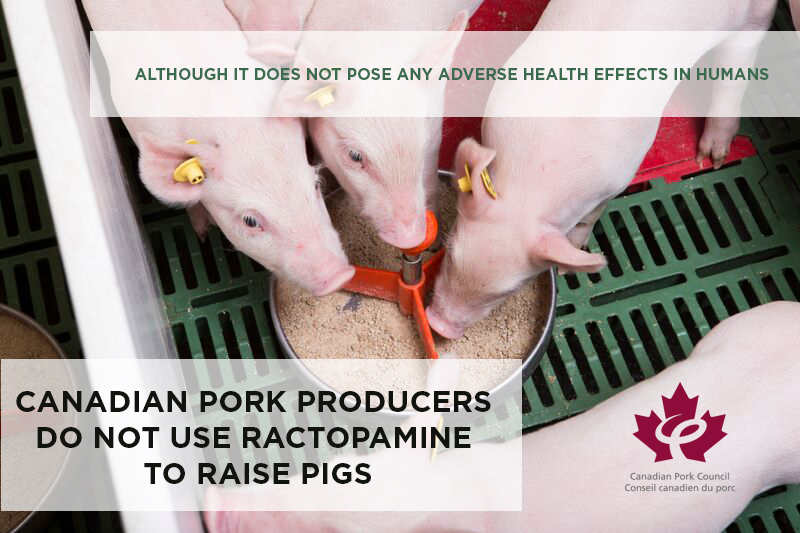Ractopamine
Virtually all Canadian pork producers do not feed ractopamine to their pigs. Although it poses no danger to human health, certain markets, such as China, demand pork that is exempt from this feed additive.
As the world's third largest exporter of pork, Canadian pork producers work closely with their consumers and adapt their production to meet the needs of local consumers. Canada's federally inspected processing plants, which produce 97% of Canadian pork, sell to these markets and thus require hogs that are “Ractopamine Free”. The Canadian Food Inspection Agency (CFIA) certifies that pork exported from Canada originates from pigs that have never been fed and/or exposed to ractopamine.

In order to demonstrate that their pigs are not fed ractopamine, Canadian pork producers comply with the Canadian Ractopamine-Free Pork Certification Program. This assurance is supported through thorough record keeping and routine audits throughout the supply chain including at the: farm and on-farm feed mill, commercial feed mill and federally inspected processing plant. This program is part of the Canadian Pork Excellence suite of on-farm program assuring the quality of Canadian pork.
For more information:
CODEX Alimentarius International Food Standards
Based on the assessment of available toxicological and residue data, Health Canada has concluded that the residues in edible tissues of cattle, swine and turkeys resulting from the use of the ractopamine products, according to the label directions, are considered to be safe and would not pose any adverse health effects in humans.
- Human Safety Assessment of Ractopamine Conducted by Health Canada